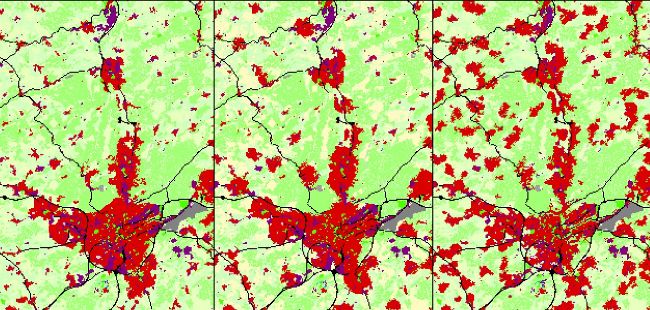Urbanisation and land-use practices in European regions
Authors: David Evers, Giancarlo Cotella, Mario Gregar


Improving urbanisation and land use practices in European regions is both necessary and possible. Although there is consensus that drivers such as demographic development (particularly in terms of households), economic growth and technology matter, it is also clear that institutional factors such as property rights, fiscal rules and other policies affect the profitability of land development. For example, territorial governance and spatial planning systems directly influence decision-making in this area. Land-use change is therefore not a natural phenomenon but socially constructed: it is the outcome of conscious decisions made by human beings. Given this, it is also something that can be affected by conscious human interventions. Policies and practices matter. The ESPON SUPER (Sustainable Urbanization and Land-use Practices in European Regions) project aims to inform decision-making on urbanisation and land use in Europe to more sustainable ends. To do this, the project has amassed a considerable body of knowledge on physical developments in the 2000–2018 period. It has also collected information on the relative success and sustainability of 232 interventions that affect, or are intended to affect, these developments. Particular attention was paid to the direct and indirect impacts of EU sectoral and territorial policies. In addition, 10 case studies were conducted on the way these interventions affect actual practices of land development. Finally, this evidence was synthesised into three scenarios for 2050 that explore the implications of pursuing three types of urbanisation. These scenarios are intended as a springboard for policy discussions on the desirability and sustainability of various urbanisation and land-use practices, as well as how to affect these practices.



3 types of urbanisation
compact urbanisation scenario: high-density urbanisation with land take close to zero;
polycentric urbanisation scenario: medium-density, clustered urbanisation, for instance the creation of new towns or transitoriented development;
diffuse urbanisation scenario: lowdensity, scattered urban development such as monofunctional car-oriented suburbs, ribbon development and ex-urban, often informal, construction.
On the basis of the evidence collected, the project team crafted policy messages including those outlined below.
Urbanisation, which accounted for almost half of land-use changes in Europe in 2000–2018, is significant for sustainability because it is so unidirectional: over eight times the amount of land is converted to urban uses than vice versa.
Interventions can and do affect urbanisation and land use. Even though these may not always be able to alter the macrodevelopments producing the demand for certain land uses, they can affect the spatial allocation of land to meet this demand. The fact that some configurations or land-use combinations are more sustainable than others provides some perspective to policy-makers. Moreover, the case studies show that most stakeholders in most cases approved of the measures finally put in place.
Generic targets or one-size-fits-all regulations have only limited value given Europe’s territorial diversity. The roadmap to a resource efficient Europe , for example, sets a target of zero net land take by 2050. Although such objectives are appealing for their clarity, they neglect the importance of context, such as the state of the local economy, ecology or society. As such, they can fail to obtain commitment from those entrusted to make local land-use decisions.
Public authorities should provide leadership in defining longterm goals, for instance in an official strategy or vision that can be used as a framework in which to embed operational interventions. The case studies revealed that visions and strategies were conducive to the successful implementation of interventions.
EU policies have a substantial impact on territorial governance and spatial planning systems and, hence, urbanisation and land use. While most EU policies were found to be supportive of sustainable urbanisation and land use, some have effects that potentially run counter to this aim. The EU could provide more leadership and coordinative capacity to support sustainability.
The SUPER project offers concrete knowledge to both decision-makers (politicians), on which course of action should be taken, and policy-makers (officials), about the best way to achieve the chosen ambitions. These insights are being bundled into the SUPER handbook Guide to Sustainable Urbanization and Land Use . EU policy-makers can use this handbook for inspiration when developing interventions (spatial plans, programmes and projects) to steer urbanisation processes and land-use decisions to give a more sustainable result.
For officials, the guide provides insight into the different instruments that influence land use, some of which are indirect and may come from surprising sources, for example fiscal arrangements or overarching visions. For politicians, it highlights governance preconditions for success and reports on experiences of the political struggles related to drawing up interventions, and how these were overcome in practice. The handbook aims to transfer knowledge to enable better decision-making, not to transfer policies per se. As geographical and institutional contexts differ greatly across Europe, although general principles can be shared, the application of these principles should be adapted to each specific situation. Readers with a solid understanding of the nature of the territory where they operate and its administrative structure, as well as their main responsibilities, will benefit most from this guide. They are best placed to evaluate whether or not a particular experience elsewhere in Europe, presented in the guide, is relevant or useful to them.